A book blurb is a concise, compelling summary of a book’s plot, characters and themes designed to captivate potential readers. Typically found on the back cover or online product page, an example of a good blurb aims to generate interest and entice individuals to explore the full book.
When buying a book, the magic often begins with a glance at the blurb on the back cover or an online description. Have you ever wondered how those concise yet captivating book blurbs pull us into their worlds? This post dissects the artistry behind crafting compelling book blurbs by analysing blurb examples from bestselling novels. It unravels the secrets of these bite-size narratives that ignite our curiosity and drive us to read the book while uncovering the techniques that make them extraordinary.
What is a book blurb?
A book blurb is a concise, carefully crafted piece of text found on the back cover or inside the dust jacket of a book. It serves as a mini preview, providing readers with a glimpse into the content and tone of the book. Here is what you need to know about a book blurb:
- Snapshot: A blurb offers a snapshot of the book’s essence, highlighting its genre, theme and central point of attention.
- Intrigue: Its primary purpose is to captivate the reader’s interest and curiosity, compelling them to read further.
- Character tease: Blurbs often introduce key characters, offering a peek into their motivations and dilemmas.
- Tone setting: Blurbs establish the tone and mood of the book, giving readers an idea of what to expect emotionally.
- Connection: The best blurb examples establish an immediate connection with the target audience, drawing them in.
How to elevate your book blurb?
Examples of well-written book blurbs are a literary invitation, encouraging readers to embark on a journey within the book’s pages. While it is possible to tackle blurbs independently, partnering with a professional editor may elevate the blurb’s quality and its potential to entice readers. A professional editor will:
- inspire and guide you when struggling with blurb creation,
- refine the blurb, ensuring it is error-free, clear and professionally presented,
- help structure the blurb for maximum impact, making it more appealing to potential readers,
- craft a polished blurb that instils confidence in the work, encouraging your readers to explore further.
Among editing services, proofreading involves checking the blurb for spelling, grammar and punctuation errors. This ensures the blurb is error-free and presents a professional image to potential readers.
Next, copyediting involves more in-depth editing, focusing on the language and structure of the blurb. A copyeditor can help you refine your message, ensuring that the blurb is clear, concise and engaging. They can also help you eliminate unnecessary words and phrases that may distract or confuse readers.
Finally, line editing involves a deeper level of editing, focusing on the flow and structure of the blurb. For instance, a line editor can help you improve the overall structure of the blurb, ensuring that it flows smoothly and is easy to read. They can also help you identify areas where the blurb may be too long or too short. In addition, effective blurb examples have dynamic pacing and resonating tone, which can be polished during line editing.
What is the function of a book blurb?
The purpose of a book blurb is to provide a concise and compelling summary of a book’s content in order to entice potential readers. Typically, the blurb serves several key functions:
- Generate interest: The primary goal is to grab the reader’s attention and spark their interest in the book. It should create intrigue and curiosity about the plot, characters, or themes.
- Convey key information: The blurb conveys essential information about the book, including the main characters, the central conflict, and the overall theme. It gives readers a snapshot of what to expect.
- Set the tone: It helps establish the tone and mood of the book. Whether it’s a suspenseful thriller, a heartwarming romance, or an informative non-fiction work, the blurb gives readers a sense of the book’s atmosphere.
- Highlight author credibility: If the author has notable credentials or achievements, the blurb may include this information to enhance the book’s perceived credibility and appeal.
- Aid in marketing: Book blurbs are crucial for marketing purposes. They are often used in promotional materials, online bookstores, and catalogue listings to attract potential readers.
- Assist in purchasing decision: Readers often rely on book blurbs to help them decide whether to purchase or read a particular book. A well-crafted blurb can influence a reader’s decision by creating a sense of anticipation and excitement.
- Showcase endorsements: Some book blurbs include endorsements or reviews from other authors, critics, or notable figures in the literary world. Positive endorsements can enhance the book’s credibility and encourage readers to give it a chance.
- Search engine optimisation (SEO): A book blurb examples often include keywords related to the book’s genre, themes, and content. These keywords can enhance the book’s SEO, making it more likely to appear in search results when users input relevant queries.
How to write an effective book blurb?
Here are some guidelines on how to write an effective book blurb based on the most famous book blurb examples:
- Begin with an attention-grabbing sentence to hook readers and create immediate intrigue about the book.
- Provide a brief, engaging summary of the main plot, characters and central conflict without revealing major spoilers.
- Showcase what sets the book apart — unique themes, twists or characters that make it compelling and distinct.
- Evoke the emotional tone of the book, allowing readers to connect with the characters and feel invested in the story.
- Avoid giving away all plot details. Create a sense of mystery to encourage readers to explore the book further.
- Clearly define the intended audience to help readers quickly determine if the book aligns with their interests.
- Briefly mention your (author’s) achievements or credentials to enhance the book’s credibility and appeal.
- Include positive reviews or endorsements from reputable sources to build trust and credibility with potential readers.
- Conclude with a compelling call to action, urging readers to explore the full book and discover its depth.
- Ensure the blurb is well-written, free of grammatical errors and reflective of the book’s overall writing style.
- Include relevant keywords related to the book’s genre and themes for improved search engine discoverability.
- Keep it short and sweet — 200 words or less.
Let’s analyse some book blurb examples to illustrate these points in practice.
What are the best book blurb examples?
Let us analyse blurb examples from famous novels to understand better how these strategies are implemented.
The Girl With All The Gifts by M.R. Carey
Every morning, Melanie waits in her cell to be collected for class. When they come for her, Sergeant keeps his gun pointed at her while two of his people strap her into the wheelchair. She thinks they don’t like her. She jokes that she won’t bite, but they don’t laugh.
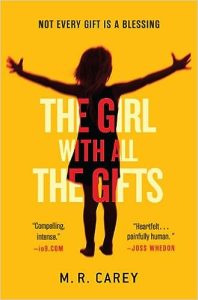
The blurb for The Girl With All The Gifts employs a suspenseful tone and concise imagery to draw readers into the story. The opening lines create a sense of anticipation as Melanie’s daily routine is described, suggesting a peculiar situation — the armed guards strapping her into a wheelchair. The blurb creates a sense of isolation and fear that Melanie evokes in the guards. The absence of laughter in response to her joke makes the readers wonder why Melanie is so dangerous. This blurb sets the stage for a story that promises curiosity and suspense, enticing potential readers to explore further.
Killing Floor by Lee Child
Ex-military policeman Jack Reacher is a drifter. He’s just passing through Margrave, Georgia, and in less than an hour, he’s arrested for murder. Not much of a welcome. All Reacher knows is that he didn’t kill anybody. At least not here. Not lately. But he doesn’t stand a chance of convincing anyone. Not in Margrave, Georgia. Not a chance in hell.
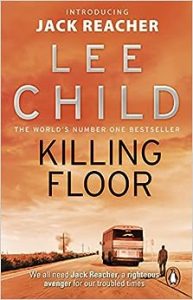
The Killing Floor blurb effectively introduces readers to the protagonist and plunges them into a compelling setup. The blurb establishes the story’s central conflict — Reacher’s abrupt arrest for murder shortly after arriving in Georgia. The tone conveys conspiracy and urgency, capturing the essence of Reacher’s situation. It also hints at Reacher’s innocence and his determination to clear his name. The phrase ‘Not much of a welcome’ emphasises the irony of his situation. The blurb paints a picture of a town where Reacher’s claims face resistance, creating an atmosphere of doubt and adversity. ‘Not a chance in hell,’ adds a final note of defiance and determination. In a concise yet impactful manner, this blurb seduces readers with its promise of a relentless protagonist navigating a web of suspicion and injustice.
The Kite Runner by Khaled Hosseini
Afghanistan, 1975: Twelve-year-old Amir is desperate to win the local kite-fighting tournament and his loyal friend Hassan promises to help him. But neither of the boys can foresee what will happen to Hassan that afternoon, an event that is to shatter their leaves. After the Russians invade and the family is forced to flee to America, Amir realizes that one day he must return to Afghanistan under Taliban rule to find the one thing that his new world cannot grant him: redemption.
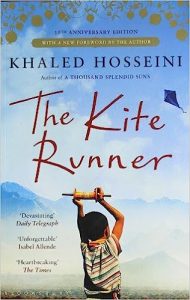
The blurb for The Kite Runner captures the essence of the novel’s evocative journey through its powerful narrative. The blurb introduces Amir’s yearning to win the kite-fighting tournament, showcasing a universal theme of ambition and companionship. The promise of his loyal friend Hassan’s support shows their profound connection. The blurb indicates the impending turning point, hinting at an event without revealing specifics, engaging readers’ curiosity and empathy. The blurb then summarises the aftermath of that event, using the dramatic phrase ‘shatter their leaves’ to convey the emotional rupture. Next, the narrative jumps forward, touching on the Russian invasion and the family’s forced migration, offering insight into Amir’s journey. The mention of redemption introduces a layer of moral complexity, signifying deeper themes at play.
The Color Purple by Alice Walker
Set in the deep American South between the wars, it is the tale of Celie, a young black girl born into poverty and segregation. Raped repeatedly by the man she calls her ‘father’, she has two children taken away from her, is separated from her beloved sister, Nettie, and is trapped into an ugly marriage. But then she meets the glamorous Shug Avery, singer and magic-maker – a woman who has taken charge of her own destiny. Gradually Celie discovers the power and joy of her own spirit, freeing her from her past and reuniting her with those she loves.
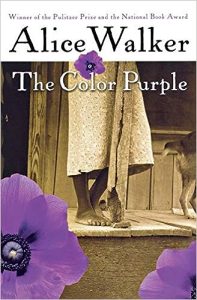
The blurb for The Color Purple provides a snapshot of the novel’s narrative. It takes readers to the deep American South during social unrest, supporting Celie’s gripping life. The blurb conveys Celie’s hardships — from enduring sexual abuse to losing her children and her painful separation from her sister. The blurb illustrates how Celie becomes trapped in an oppressive marriage that seems to define her existence. However, a glimmer of hope emerges when she crosses paths with Shug Avery, a charismatic singer and empowering woman. Shug’s influence becomes transformative as Celie navigates the terrain of her identity. The blurb conveys Celie’s journey from victimhood to empowerment, highlighting her resilience and strength as she rises above her past.
Sophie’s World by Jostein Gaarder
When 14-year-old Sophie encounters a mysterious mentor who introduces her to philosophy, mysteries deepen in her life. Why does she keep getting postcards addressed to another girl? Who is the other girl? And who, for that matter, is Sophie herself? She uses her new knowledge of philosophy to solve the riddle, but the truth is far stranger than she could have imagined.
An addictive blend of mystery, philosophy and fantasy, Sophie’s World is an international phenomenon translated into 60 languages and sold over 40 million copies. A Children’s Bookshelf Selection: Each month our editors pick the best books for children and young adults by age to be a part of the children’s bookshelf. These are editorial recommendations made by our team of experts. Our monthly reading list includes a mix of bestsellers and top new releases, and evergreen books that will help enhance a child’s reading life.
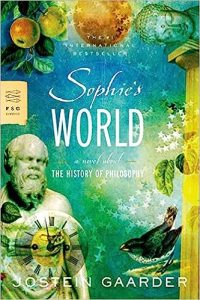
The blurb for Sophie’s World captivates readers with an introduction to its plot. It introduces Sophie, whose encounter with a mysterious mentor leads her into the world of philosophy. This blurb example poses questions that awaken readers’ curiosity: Why does Sophie receive postcards meant for another girl? Who is this elusive girl, and what secrets she holds? It also hints at the central argument — Sophie’s journey to solve this puzzle through her newfound knowledge of philosophy, promising a compelling blend of mystery and intellectual exploration. The blurb’s emphasis on the fusion of mystery, philosophy and fantasy further heightens the book’s appeal. The blurb concludes with a special note about the book’s recognition as a Children’s Bookshelf Selection, showcasing the editorial expertise behind its recommendation.
Final thoughts
Mastering crafting compelling book blurbs is an essential skill for any seasoned or aspiring author. By probing into blurb examples and conducting in-depth analyses, you have gained valuable insights into the particulars of crafting captivating blurbs that entice readers. Remember, a well-crafted blurb draws readers into your story, making them eager to explore the pages within. Contact me for a free sample edit (and remember to use my early bird discount) to determine if your manuscript may benefit from developmental editing. If you want to hear more from me, including self-editing and writing tips, follow me on Mastodon, Twitter, Facebook and LinkedIn or join my newsletter.

